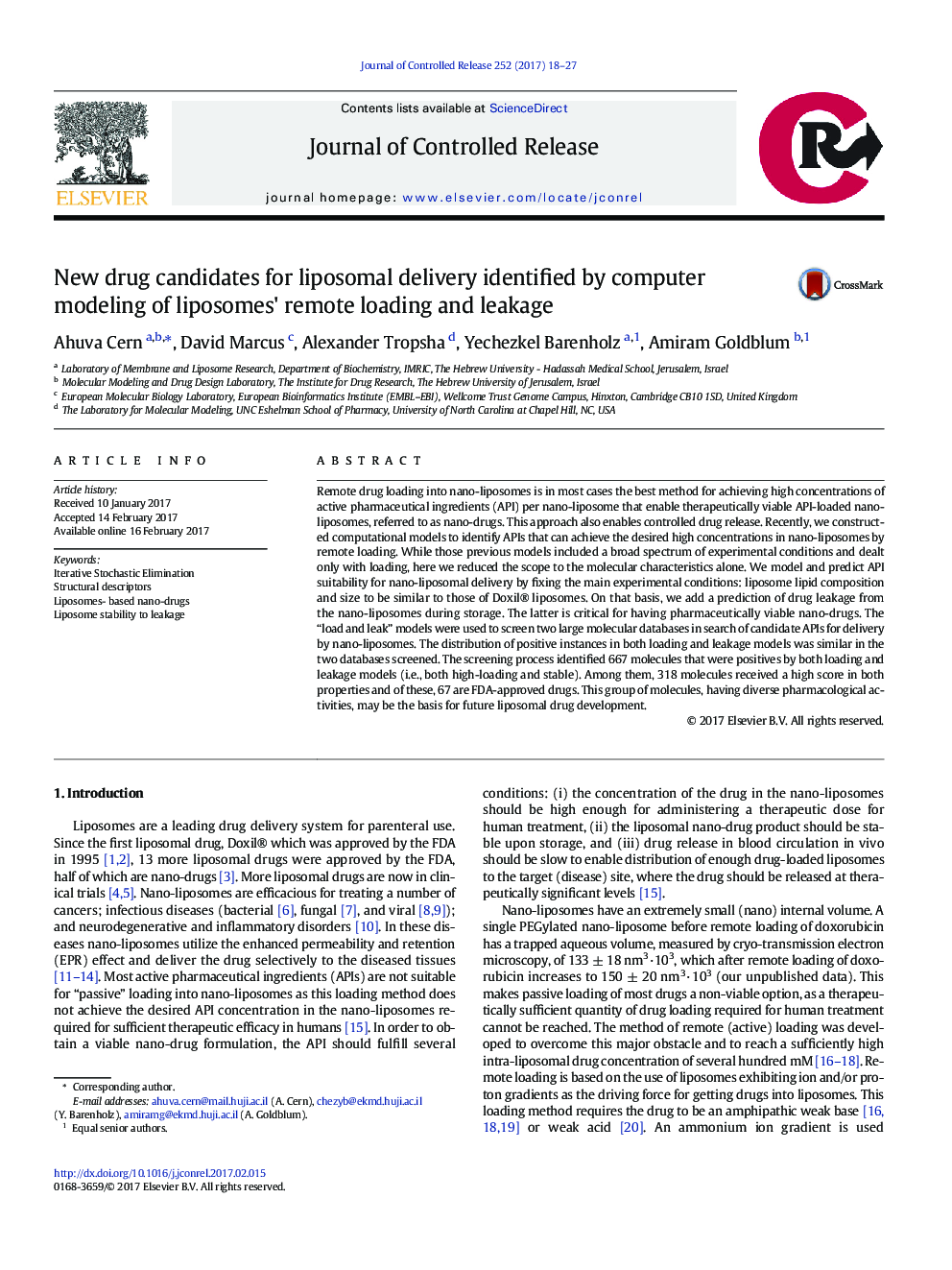| Article ID | Journal | Published Year | Pages | File Type |
|---|---|---|---|---|
| 5433807 | Journal of Controlled Release | 2017 | 10 Pages |
Remote drug loading into nano-liposomes is in most cases the best method for achieving high concentrations of active pharmaceutical ingredients (API) per nano-liposome that enable therapeutically viable API-loaded nano-liposomes, referred to as nano-drugs. This approach also enables controlled drug release. Recently, we constructed computational models to identify APIs that can achieve the desired high concentrations in nano-liposomes by remote loading. While those previous models included a broad spectrum of experimental conditions and dealt only with loading, here we reduced the scope to the molecular characteristics alone. We model and predict API suitability for nano-liposomal delivery by fixing the main experimental conditions: liposome lipid composition and size to be similar to those of Doxil® liposomes. On that basis, we add a prediction of drug leakage from the nano-liposomes during storage. The latter is critical for having pharmaceutically viable nano-drugs. The “load and leak” models were used to screen two large molecular databases in search of candidate APIs for delivery by nano-liposomes. The distribution of positive instances in both loading and leakage models was similar in the two databases screened. The screening process identified 667 molecules that were positives by both loading and leakage models (i.e., both high-loading and stable). Among them, 318 molecules received a high score in both properties and of these, 67 are FDA-approved drugs. This group of molecules, having diverse pharmacological activities, may be the basis for future liposomal drug development.
Graphical abstractComputational models to predict loading into, and leakage from liposomes were developed based on molecular descriptors. Screening 13,700 molecules resulted in 318 high-score molecules of which 67 are FDA-approved drugs.Download high-res image (163KB)Download full-size image
